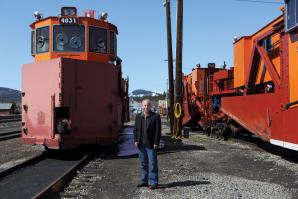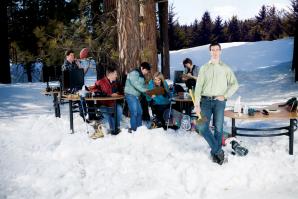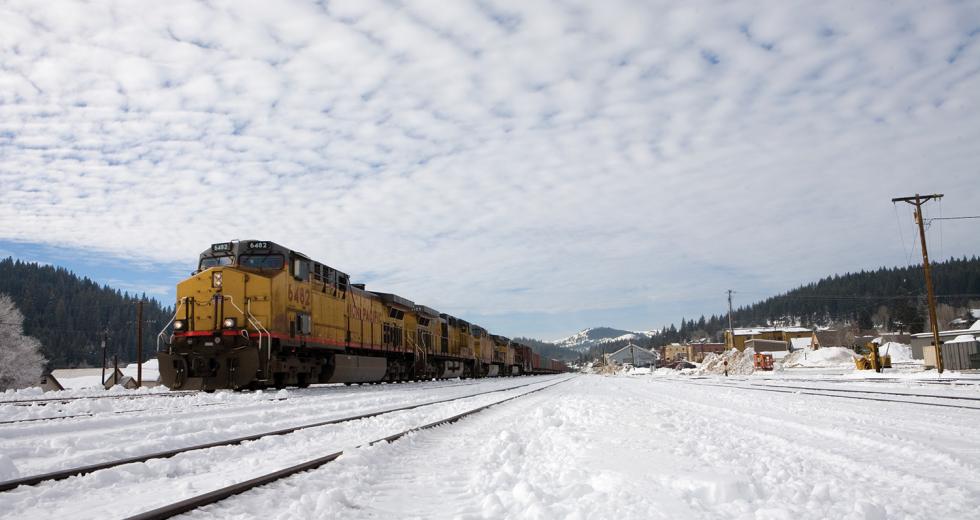When boom went bust in Truckee, the mountain town wasn’t left empty-handed. Everywhere you look are reminders of the high times in the ski town’s real estate market — not only new homes, but new trails, a community center, a new middle school and affordable housing; the list goes on.
Like many Western towns, Truckee is both benefiting and suffering from the rise and fall of real estate. Some of the biggest project’s in the town’s history helped finance the community’s newest infrastructure, boost employment and fill tax coffers for the erstwhile lumber and locomotive town. But as the real estate market faltered, those same projects have saddled the town with a high inventory of unsold lots, a sputtering economy and two big questions: How much new building can the town handle, and how does the town replace real estate as an economic engine?
Despite the aggressive downturn of development in Truckee, the slow times might not be slow enough for commercial properties.
Unlike 2004 to 2006, when Truckee was flooded with proposals from residential projects, the town is now handling large proposals that could add as much as 200,000 square feet of commercial space. Between the town’s railyard redevelopment plan, the 70-some acre Joerger Ranch residential project, the Coldstream Specific Plan proposal and the recently approved Hilltop Master Plan that sets the stage for 55,265 square feet of commercial development, new commercial space being is proposed in a wave similar to the residential real estate run-up.
And, already, an economic analysis completed for the railyard proposal — a downtown commercial project planned for the railroad property abutting Commerical Row — is ringing the alarm bells.
“I don’t see us going back to 2006. I’m not that optimistic, and I don’t think that’s where we want to go.” —Tony Lashbrook, town manager, Truckee
“Although the economic downturn may prevent some of the planned retail from being developed, the town should take a conservative approach in approving new retail to ensure actual development does not outpace demand,” according to the report.
But being cautious with new projects is fine with town officials who are not trying to restart the market feeding frenzy that took place three years ago.
“I don’t see us going back to 2006. I’m not that optimistic, and I don’t think that’s where we want to go,” says Tony Lashbrook, Truckee’s town manager.
The trick will be to balance building and economic development, so that new development comes online paced with new demand. “I think you will see in the future the town really homing in on economic issues,” Lashbrook says.
When Lashbrook looks back on the town’s building boom, he’s reminded of Gray’s Crossing. The building approved in 2004 was the largest in the town’s incorporated history.
To gain approval from the town, Gray’s Crossing developer East West Partners donated property for a community center, church and middle school. They promised to build affordable housing, donated land for more affordable housing and agreed to abide by a “local’s first” clause, where local contractors and building material suppliers were given preference.
“I think what worked out well was getting the community benefit on the front end,” Lashbrook says.
Those benefits help to take some of the sting out of a building slowdown that has clearly hurt the town. Truckee has gone from issuing more than 200 building permits annually to just 28 this year, and the town’s building department has been cut from 13 staffers to three. “That’s a pretty dramatic drop,” Lashbrook says.
“People that don’t have a job will look to something to do besides build something that we don’t need.”
John Eaton, president, Mountain Area Preservation Foundation
And the town’s biggest sales tax producer, construction material sales, has dropped off in equally dramatic fashion.
“For a community that has grown significantly, we’re doing better than most, but that’s because we didn’t put big tracts of housing out there that lost huge chunks of value,” Lashbrook says. “But still a huge segment of our economy is not functioning right now.”
Those answers may come from a new report and study the town has launched to stimulate economic development.
In an increasingly wireless world where workers can be employed where they want to live, the town is focusing on marketing Truckee as a place to live, hoping the newcomers will bring jobs with them. And Lashbrook says that employers such as Tahoe Forest Hospital have recently expanded, bringing in good-paying jobs.
“People that don’t have a job will look to something to do besides build something that we don’t need,” says John Eaton, president of the Mountain Area Preservation Foundation.
Recommended For You

Economic Engine that Could
Truckee's railyard development faces its toughest hill yet
A town long known for its quaint historic authenticity, Truckee in the past five years has evolved from a sleepy hamlet to a city with the promise of vibrancy.

When the Walls Come Down
Clear Capital finds success in Tahoe's playground
When Kevin Marshall co-founded a real estate valuation firm in 2001, his first order of business was to bust down the walls.



